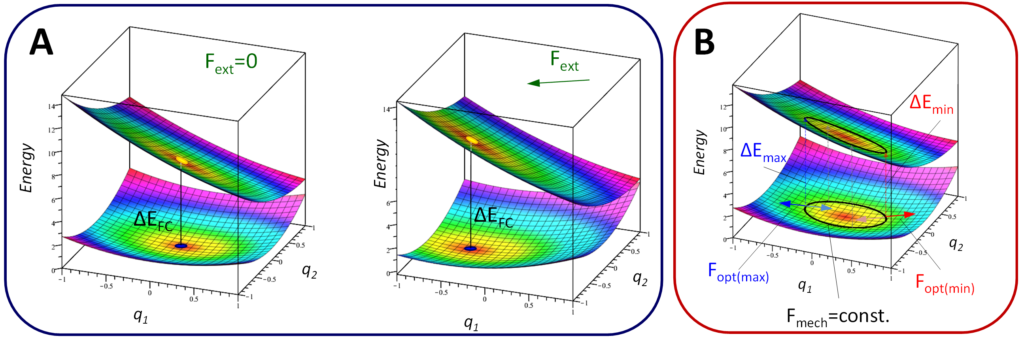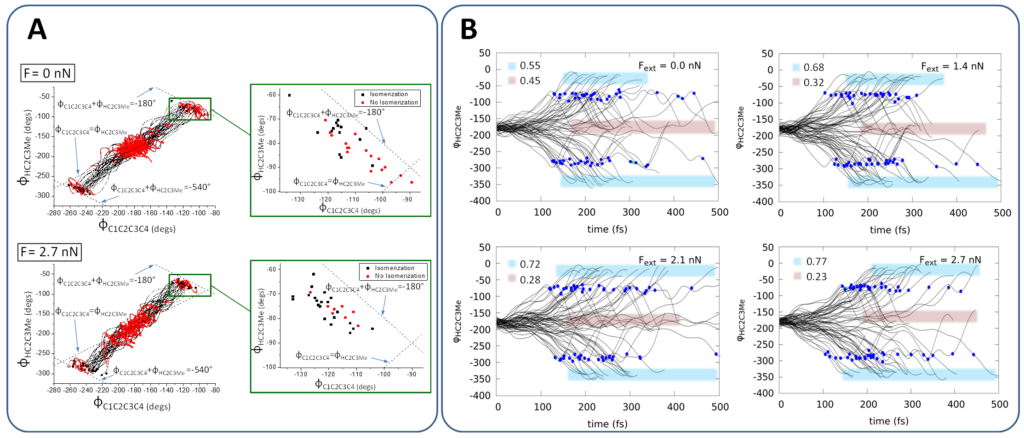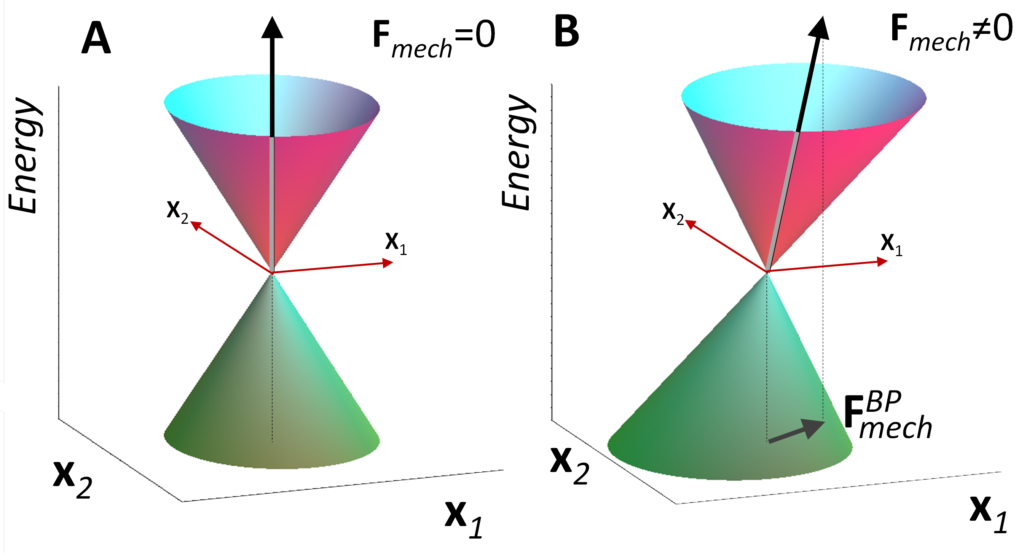Mechano-photochemistry studies how mechanical forces affect photochemical reactions and photophysical processes. In these systems, light excites molecules, while mechanical forces change reaction pathways and/or molecular properties. This field combines ideas from mechanochemistry and photochemistry to control molecules at a small scale.
New techniques allow precise control of mechanical forces, such as atomic force microscopy (AFM), polymer stretching, and molecular force probes. Computer models, like force-modified potential energy surfaces (FMPES) and non-adiabatic molecular dynamics, help study these effects.
Mechanical forces can change key photochemical properties, such as absorption and emission spectra, triplet energy transfer, and conical intersections. This affects reaction efficiency and selectivity. Applications include energy storage in molecular solar-thermal systems (MOST), tuning molecular potoswitches, and improving mechanophore-based materials.
As research continues, mechano-photochemistry may help create new responsive materials and improve photochemical reactions for energy conversion and molecular electronics.
Mechanical tuning of excitation energy

(A) In a two-state model PES, increasing mechanical forces shift the ground-state minimum, affecting excitation energy (e.g., a blue shift in this case). The PES is color-mapped based on the ground-state energy gradient vector magnitude, showing the mechanical accessibility of each point. (B) The optimal force for a specific excitation energy is found by optimizing the energy difference (ΔE) while keeping a constant force magnitude (black curve in both ground and excited states). Two solutions appear: one with the largest decrease in excitation energy (ΔEmin) and one with the largest increase (ΔEmax). The corresponding mechanical force vectors are also shown.
Non-adiabatic molecular dynamics (NAMD) can be done to describe excited-state evolution of mechano-photochemical systems

(A) Simulated NAMD trajectories for forces F = 0 nN and F = 2.7 nN. In-phase motion of φC1C2C3C4 and φHC2C3Me torsions is shown in red, while black dots indicate out-of-phase motion. The regions where the sum of the angles is -180 or -540 degrees are marked. As the force increases, the φHC2C3Me torsion evolves faster than the φC1C2C3C4 torsion, reaching hopping points with smaller φC1C2C3C4 values.
(B) NAMD trajectories for different applied forces showing the fraction of cases that achieve successful isomerization.
Conical Intersection topography mechanically tuned

(A) Example of a conical intersection (first-order expansion in coordinates) without mechanical perturbation. (B) When a mechanical force with a component along the branching plane (x1 and x2 vectors) is applied, it affects the tilt of the conical intersection.